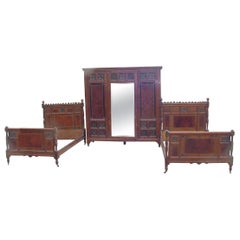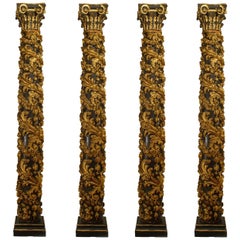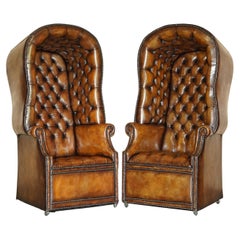James Jeffrey Antiques
1880s English Aesthetic Movement Antique James Jeffrey Antiques
Walnut
People Also Browsed
Late 17th Century Italian Rococo Antique James Jeffrey Antiques
Wood
Late 19th Century English Late Victorian Antique James Jeffrey Antiques
Leather
Late 19th Century French Gothic Antique James Jeffrey Antiques
Oak
Late 19th Century French Renaissance Revival Antique James Jeffrey Antiques
Oak
Early 20th Century French Empire Antique James Jeffrey Antiques
Malachite, Ormolu
19th Century French Louis XV Antique James Jeffrey Antiques
Fabric, Wood
Mid-20th Century Italian Gothic Antique James Jeffrey Antiques
Wrought Iron
18th Century French Louis XVI Antique James Jeffrey Antiques
Upholstery, Wood
20th Century French Napoleon III Antique James Jeffrey Antiques
Stone
1850s English Antique James Jeffrey Antiques
Wood
Mid-19th Century English Gothic Revival Antique James Jeffrey Antiques
Limestone
21st Century and Contemporary English Louis XVI Antique James Jeffrey Antiques
Gold Leaf
2010s Italian Baroque Antique James Jeffrey Antiques
Gold Leaf
19th Century Italian Baroque Antique James Jeffrey Antiques
Upholstery, Giltwood
1840s English Early Victorian Antique James Jeffrey Antiques
Leather, Hardwood
1860s English Gothic Revival Antique James Jeffrey Antiques
Oak
Bruce James Talbert for sale on 1stDibs
Bruce James Talbert was one of the most noteworthy furniture designers of the 19th century. The Scottish architect, draftsman and designer created stunning pieces of Gothic furniture and his landmark book, Gothic Forms Applied To Furniture, Metalwork and Decoration For Domestic Purposes, was influential on the Gothic Revival movement both in Europe and North America.
Born in 1838, Talbert started his career as an apprentice to a woodcarver in Dundee, Scotland. When he was 18 years old, he was briefly employed by the architect Charles Edward. He subsequently had several successful partnerships with design firms and manufacturers.
In 1862, Talbert moved to Manchester, England, where he was hired to design furniture for Doveston, Bird & Hull. Later that year, British metalworker Francis Skidmore hired him to his company, Art Manufacturers. During his time with the company, Talbert worked on Sir George Gilbert Scott’s Hereford Screen, a major Gothic Revival iron design, and the Albert Memorial. In 1866, Holland & Sons furniture manufacturer in London hired Talbert. He won the silver medal at the International Exposition of 1867 in Paris and, in 1868, he became the lead designer for Gillows of Lancaster and London. There, Talbert expanded his line of work, exploring different media and producing beautiful tiles, stained glass, textiles and metalwork.
Talbert influenced the Gothic Revival style with his detailed furniture designs, recognizable for their gold and wood mosaic inlays. His many publications on woodworking and cabinetmaking further guided the American industry, including the work of furniture designers Herter Brothers, Kimbel and Cabus, Frank Furness and Daniel Pabst.
On 1stDibs, find Bruce James Talbert case pieces and storage cabinets, seating, tables and more.
A Close Look at aesthetic-movement Furniture
In 1880, polymath designer William Morris declared: “If you want a golden rule that will fit everybody, this is it: Have nothing in your houses that you do not know to be useful or believe to be beautiful.” His words encapsulated the Aesthetic Movement, which prized beauty above all and blurred the lines between fine art and the decorative arts, particularly through lavishly crafted furniture pieces.
The Aesthetic Movement, whose major proponents included author Oscar Wilde, flourished from the 1860s to the 1880s and was mostly popular in England and the United States. Design expositions like the 1876 Centennial International Exhibition in Philadelphia, as well as the publishing of how-to books for interior design, helped disseminate Aesthetic Movement bedroom furniture, serveware, coffee tables and other items, especially to the middle class.
The establishment of new art museums, art clubs and a rising passion for collecting at the time contributed to a growing appreciation for art. Morris’s founding of Morris & Co. in 1862 and the commercializing of this “cult of beauty” by the Liberty store in London, starting in the late 19th century, further disseminated the idea of a domestic space that was thoughtfully and floridly designed.
Leading Aesthetic Movement furniture designers included E.W. Godwin, who drew on Japanese influences and whose work reflected a wider enthusiasm for imported East Asian art. British designer Christopher Dresser created textiles, ceramics and more that were also inspired by Japanese decorative art but were representative of additional diverse design sources that ranged from Egypt to Mexico.
The Aesthetic Movement’s eclecticism resulted in dazzling interiors. Japanese fans were positioned on Renaissance-inspired cabinets with brass hardware, while mantels made of rich walnut or finely carved ebonized wood and adorned with painted Minton tiles mingled with cast-iron chairs against a backdrop of floral wallpaper. In 1881, in New York City, stenciled checkerboard motifs and painted floral murals could be found under an opalescent glass chandelier in a luxurious dressing room designed by German émigré cabinetmaker-decorator George Alfred Schastey. Amid the rise of the industrial age, the style’s promotion of art in everyday life would inform the Arts and Crafts Movement and Art Nouveau.
Find a collection of antique Aesthetic Movement seating, tables, decorative objects and other furniture and antiques on 1stDibs.
Finding the Right wardrobes-armoires for You
When shopping for antique and vintage wardrobes and armoires for your home, there are several things to keep in mind, not least of which is question number 1:
What is the difference between an armoire and a wardrobe?
The difference between an armoire and a wardrobe is actually simple: An armoire is merely an ornate wardrobe. A wardrobe is a tall, streamlined storage cabinet that usually has some combination of drawers, shelves and hanging rods.
Antique and vintage armoires, on the other hand, are freestanding, heavy wooden structures that typically feature decorative metal hinges and pictorial carvings. Armoires are large cabinets that aren’t outfitted with the varied storage features that wardrobes now commonly have. Armoires often have one or two doors and a hanging bar and allow for quick access. Whether a minimalist mid-century modern wardrobe or grandiose Victorian-era armoire is the right fit for you, both are highly functional furnishings and can be a smart storage solution.
Armoires have been around since medieval times, and initially they may have housed weapons and armor. In their early days, armoires were often adorned with elaborate carvings and lavish paintings, particularly in Renaissance-era France. During the 18th century and later, armoires were widely known as “presses” for hanging clothes, and they were so large that they swallowed up the room where they stood.
In today’s modern homes, an antique armoire can be a striking, architectural work of art amid comparably unadorned furnishings. Whether you’re using your piece in the kitchen for cookware or as a food pantry, in the bedroom for clothes or in the living room as a media console, it will likely become a lovable focal point.
The evolution of the armoire can be seen in today’s corner wardrobes, which may rest on an asymmetrical base to account for corner placement, and even mirrored wardrobes, which feature a mirror affixed to the inside panel of one of the doors for convenience. Contemporary wardrobes commonly feature additional sliding trays and drawers and hanging space for clothing or linens, and the cabinet doors make them ideal for concealing televisions and computer monitors when such devices aren’t in use.
When choosing the right wardrobe or vintage armoire for your home, it’s good to have the following in mind: What are you planning to store in it? How much of what you’re storing will need to be housed in it? It should be big enough to accommodate your needs. What is the size of the room where your wardrobe or armoire will live? A large new piece of furniture in a modest space can easily become a hindrance if you have to navigate your way around it during your daily routine, so be mindful of the area you'll need in order to move freely.
Whether you are looking for an antique walnut armoire or a simple contemporary wardrobe, find the right piece for your home today on 1stDibs.


